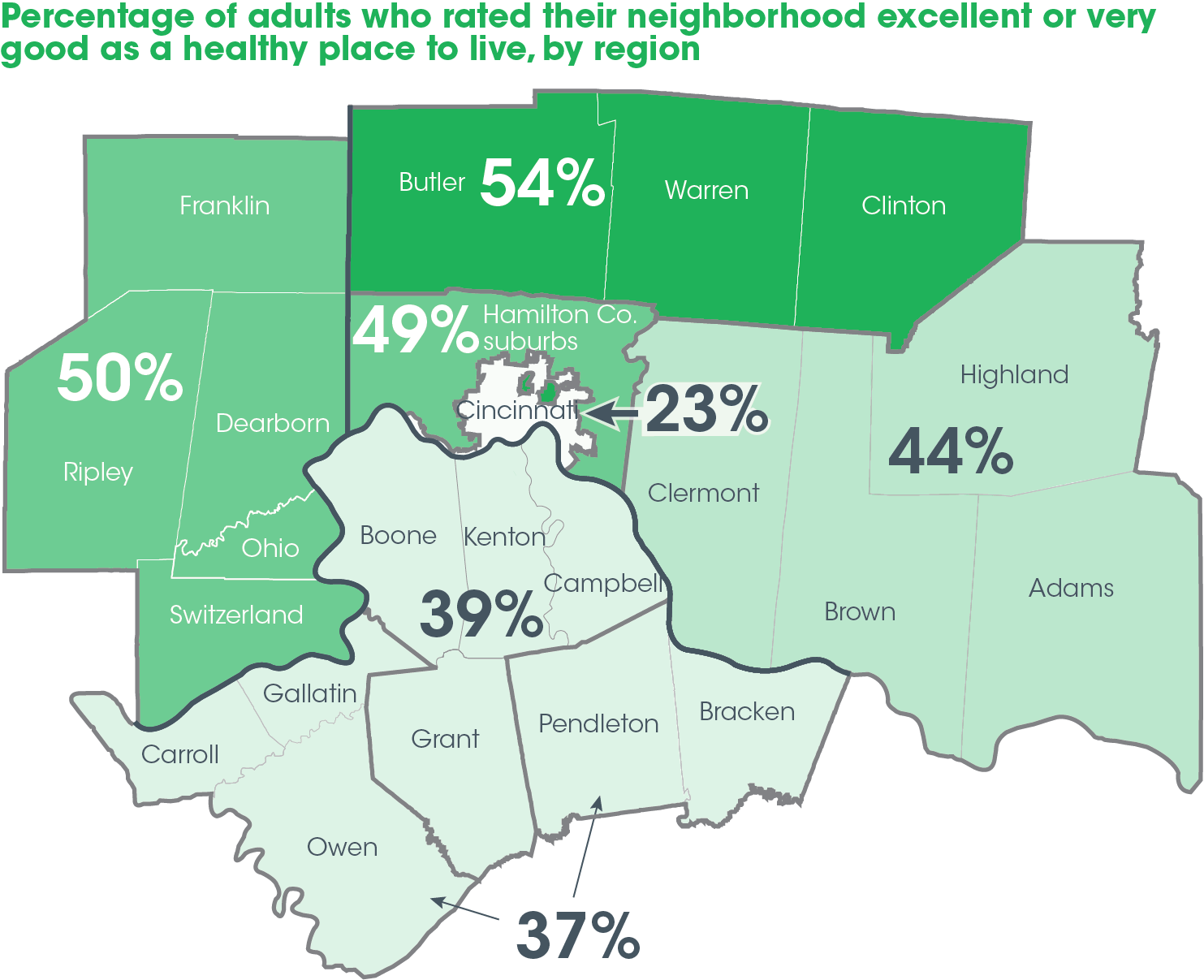According to the 2017 Community Health Status Survey (CHSS), sponsored by Interact for Health, about 3 in 10 Greater Cincinnati and Northern Kentucky adults (32 percent) said the region was excellent or very good as a healthy place to live. This is about the same as 2013.
“Where people live affects their health,” says O’dell Moreno Owens, M.D., M.P.H., President/CEO of Interact for Health. “Living in a healthy region or neighborhood has a positive impact on personal and community health.”

When asked if this area is a healthy place to live, responses varied by geography. Adults in Boone, Campbell, Grant, and Kenton counties rated the health of the region similar to other adults in the region. Adults in Bracken, Carroll, Gallatin, Owen and Pendleton counties rated the health of the region lower than other adults in the region (19 percent versus 32 percent). Responses in most areas remained stable between 2013 and 2017.
4 in 10 say their neighborhood is a healthy place to live
CHSS also asked, “How would you rate your neighborhood as a healthy place to live?”
More than 4 in 10 adults in the region (44 percent) said their own neighborhood was excellent or very good as a healthy place to live. This is less than in 2013 (48 percent). Similar to 2013, City of Cincinnati residents were the least likely to rate their neighborhood as excellent or very good (23 percent), while residents of Butler, Clinton and Warren counties were the most likely (54 percent) to do so.
Adults in Boone, Campbell, Grant and Kenton counties rated the health of their neighborhood lower than the region’s average (39 percent versus 44 percent). This was a decline from 2013 results (was 48 percent, now 39 percent). Adults in Bracken, Carroll, Gallatin, Owen and Pendleton counties also rated the health of their own neighborhood lower than adults in the rest of the region (37 percent versus 44 percent). The neighborhood health rating also dropped in 2017 for these counties (was 45 percent, now 37 percent).

Race, income play a role in perception of regional and neighborhood health
African American adults were less likely than White adults to report that the region or their neighborhood is a healthy place to live.
Adults earning 100% or less of the Federal Poverty Guidelines (FPG: $24,250 for family of four; 200% was $48,500))* were less likely than adults earning more than 100% FPG to rate the region or their neighborhood as a healthy place to live.
More information about Greater Cincinnati adults’ perceptions of the health of the region and their neighborhoods, and other topics, is available online at www.interactforhealth.org/community-health-status-survey.
Interact for Health builds healthy communities for all people. We serve as a catalyst for health and wellness by promoting healthy living through grants, education, research, policy and engagement. Interact for Health is an independent foundation that serves 20 counties in Ohio, Kentucky and Indiana. More information is available on their website.















